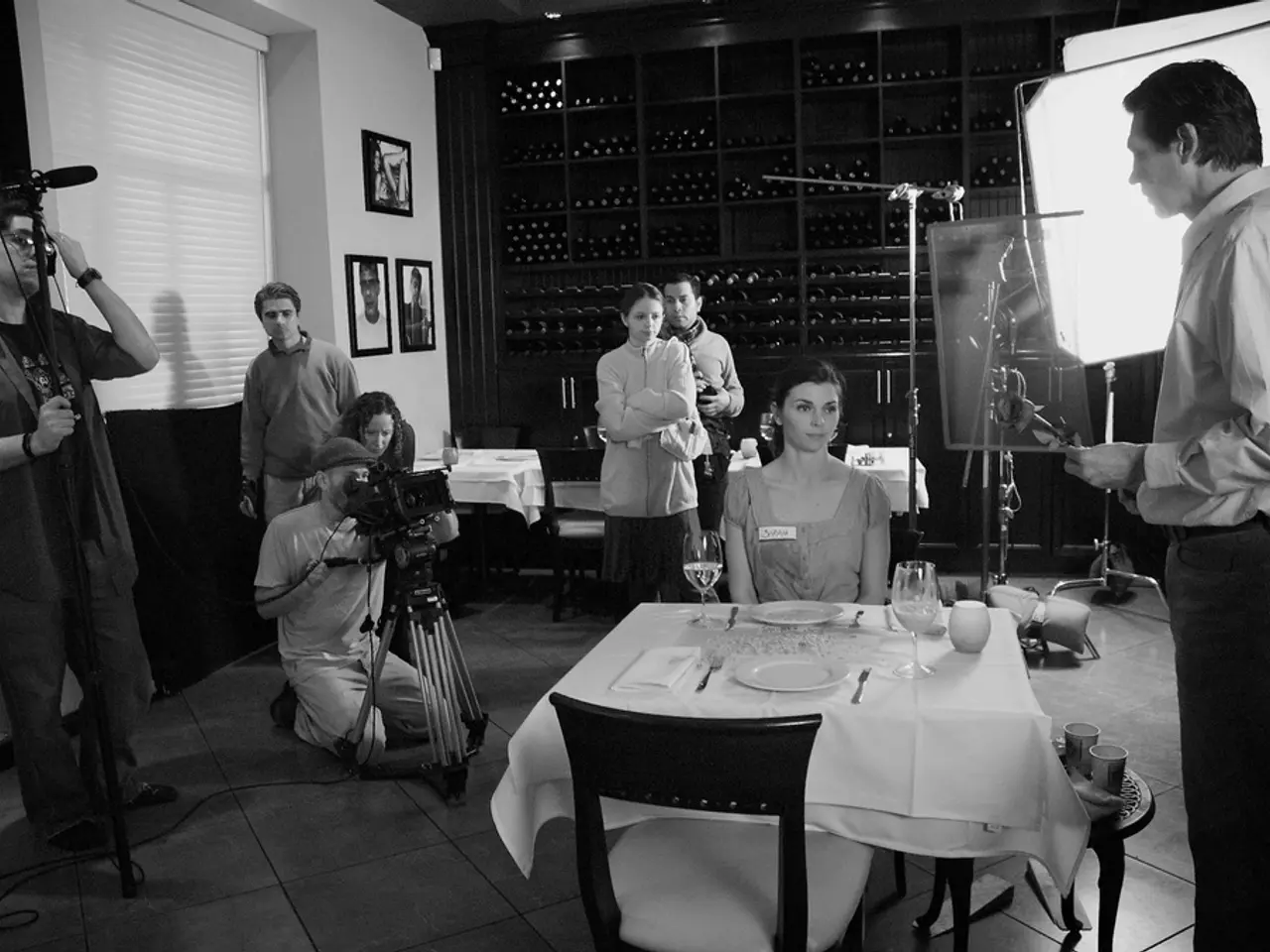Cinematography's Stunning Display: Why Visual Storytelling Takes Center Stage in This Movie
In the world of filmmaking, cinematographers have a unique ability to elevate movies into visual poetry, enhancing storytelling and immersing audiences in a rich emotional experience. This art form is achieved through mastery of lighting, composition, color grading, and focus.
Lighting plays a crucial role in shaping mood and atmosphere. Whether it's motivated, naturalistic, or stylized, the control of light direction, quality, and color temperature sculpts faces and spaces, influencing the emotional impact with precision or organic spontaneity. Soft, even lighting creates an elevated realism and quiet emotional tone, while contrastive, shadow-laden lighting adds drama or unease.
Composition is another essential tool in the cinematographer's arsenal. Careful framing, such as close-ups, unlocks hidden emotional layers by focusing tightly on a character's face, revealing micro-expressions and psychological depth without words. Other compositional tools include tracking shots to follow characters dynamically, Dutch angles to convey disorientation, and layered or deep focus to create rich, meaningful visual spaces.
Color grading is another powerful storytelling tool. The choice of palette affects tone—muted, earthy neutrals convey realism and maturity, while punchy or stylized colors can heighten mood or symbolize themes. Avoiding overly saturated colors can evoke subtlety and restraint, helping the story feel grounded or nostalgic.
Focus and lens use also contribute significantly to the visual narrative. Techniques like anamorphic lenses introduce distinctive flares, bokeh, and widescreen aesthetics that lend a cinematic, poetic texture to visuals. Focus manipulations, including deep focus or selective focus, direct viewers' attention and enhance spatial storytelling.
Together, these techniques form a silent visual language where every light shift, framing choice, and color tone contributes to the film’s emotional rhythm, atmosphere, and narrative depth—transforming scenes into evocative, poetic imagery that resonates beyond words.
Additional technical elements complement these core methods. Use of long takes and "pillow shots" (transitional, atmospheric shots) can create rhythm, allow contemplation, and deepen immersive realism. Advanced tools like drone cinematography and virtual production open new visual perspectives, enriching storytelling possibilities while supporting these foundational techniques.
In essence, cinematographers use a sophisticated interplay of light, composition, color, and focus not just for aesthetic appeal but to craft visual poetry that dialogues silently with viewers, enhancing story and emotional experience. Whether evoking calmness or melancholy with blue, infusing a scene with optimism or highlighting a character's vitality with yellow, or symbolizing passion, danger, or intensity with red, these artists weave a tapestry of emotions that resonate long after the credits roll.
- The director's artful utilization of cinematography in a film can significantly elevate scenes, transforming movies into visual poetry that resonates emotionally with audiences.
- With mastery over lighting, composition, color grading, and focus, cinematographers create mood and atmosphere, sculpting faces and spaces with precision and organic spontaneity.
- In animation, the choice of color grading can also heavily influence the film's tone, heightening mood or symbolizing themes through the use of various palettes.
- The implementation of artificial intelligence in cinema and movies-and-TV entertainment could potentially enhance the storytelling capabilities of filmmakers, allowing for more complex and immersive visual narratives.
- In the world of entertainment, filmmaking involves a multitude of technical elements combining to create a silent visual language, with each light shift, framing choice, and color tone contributing to the film's emotional rhythm, atmosphere, and narrative depth.
- Utilizing technology like drone cinematography and virtual production not only offers new visual perspectives but also enriches storytelling possibilities, supporting the foundational techniques used by cinematographers and filmmakers to craft their visual poetry.




